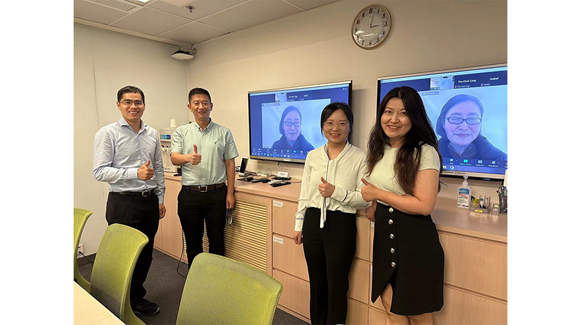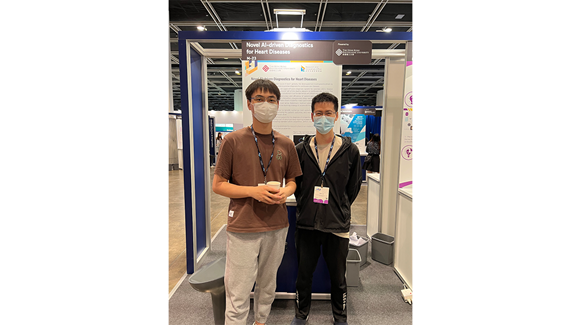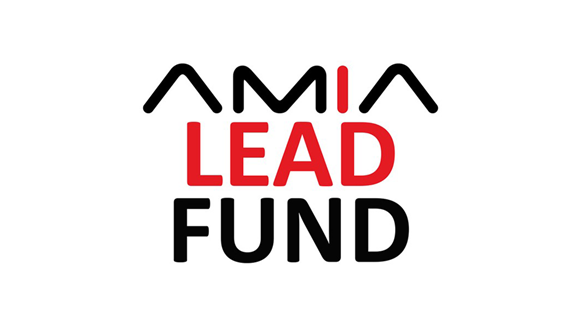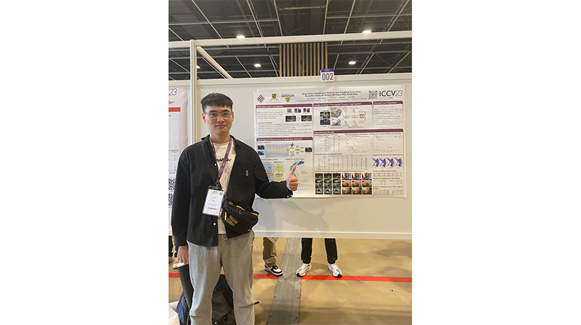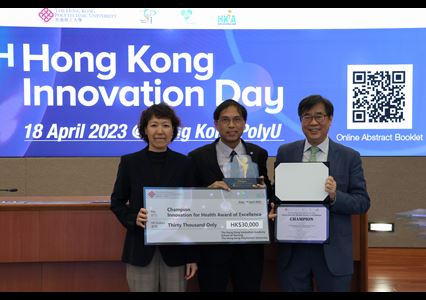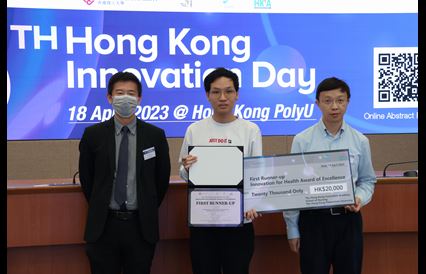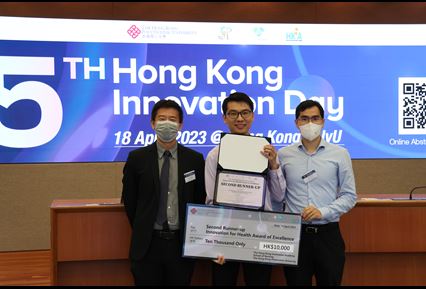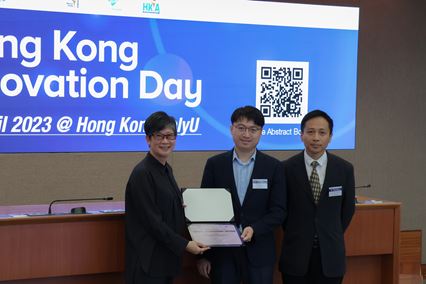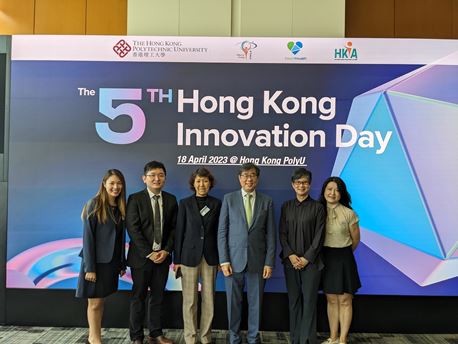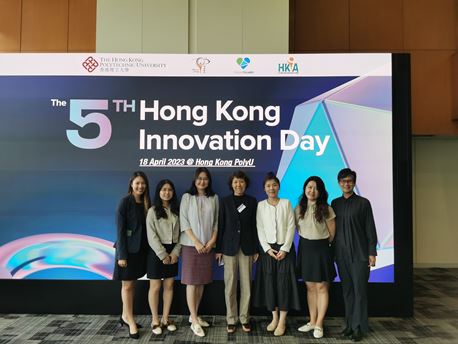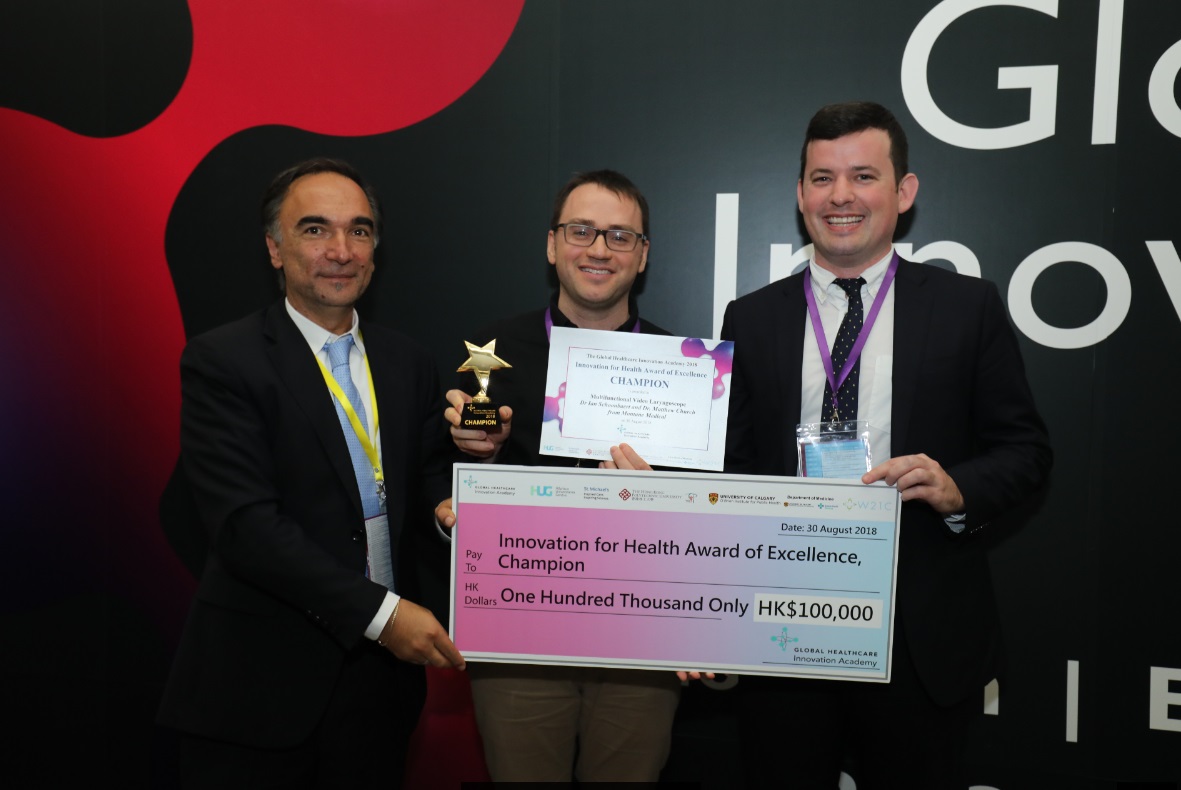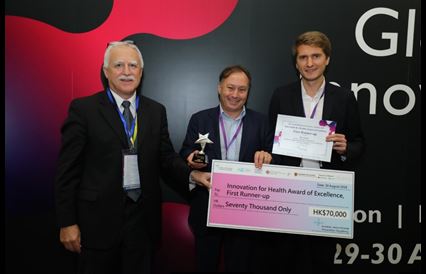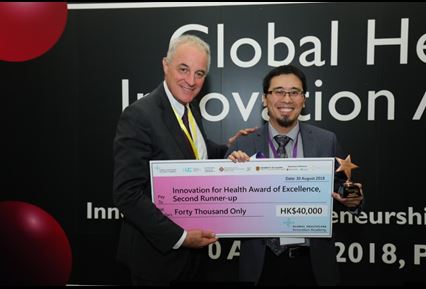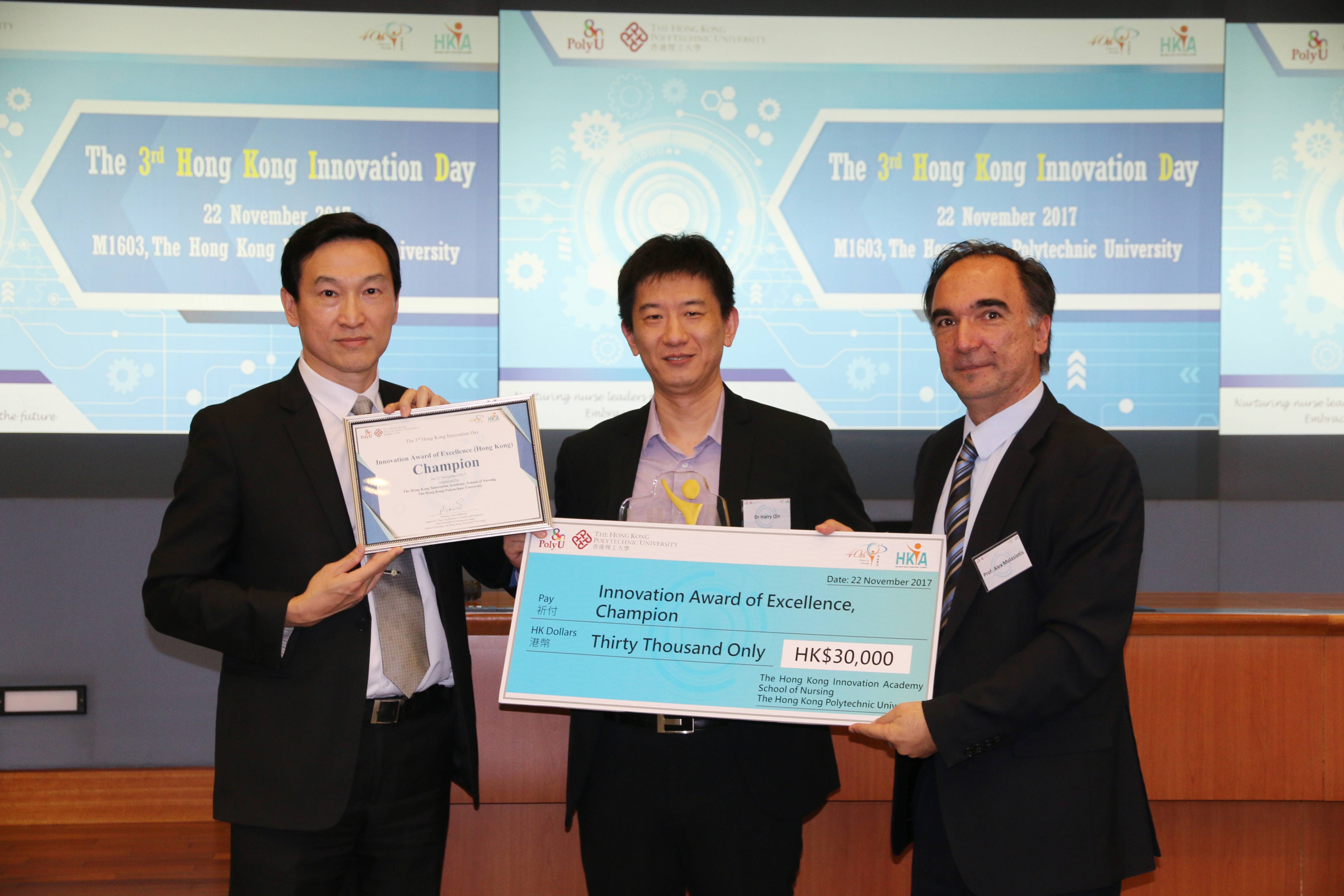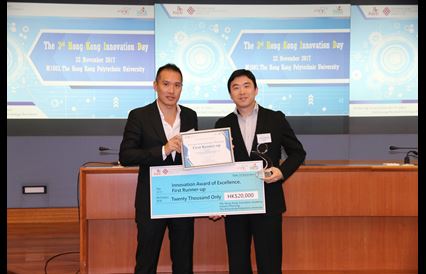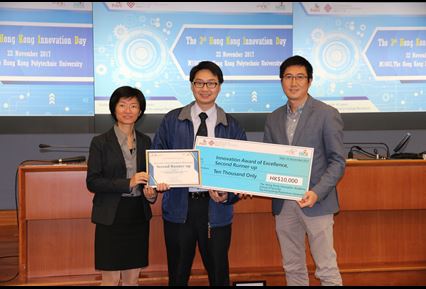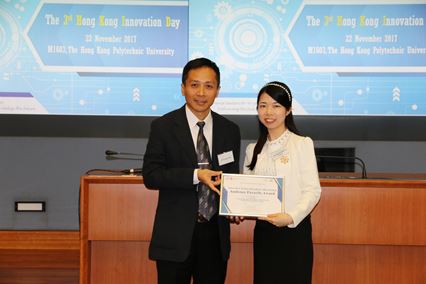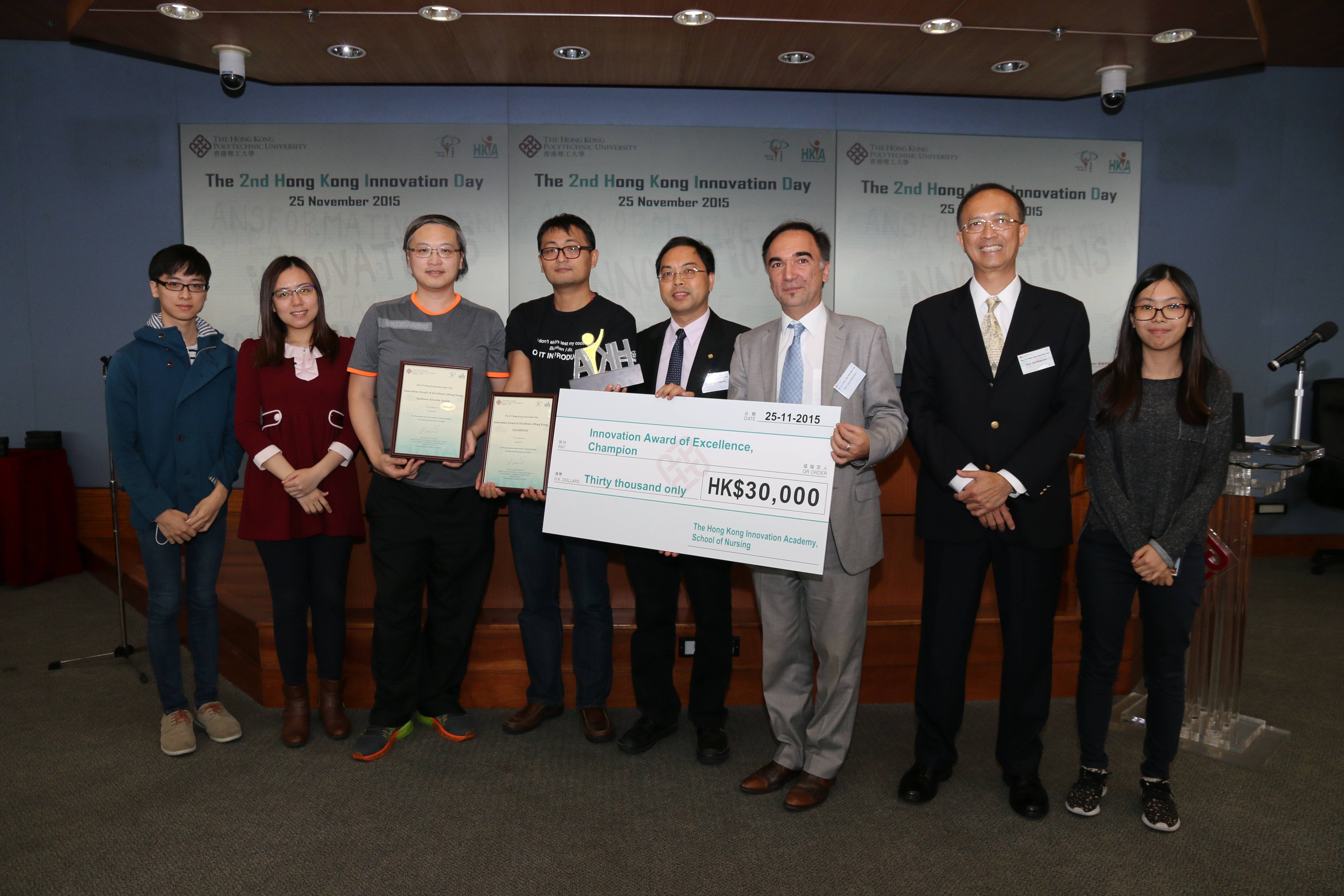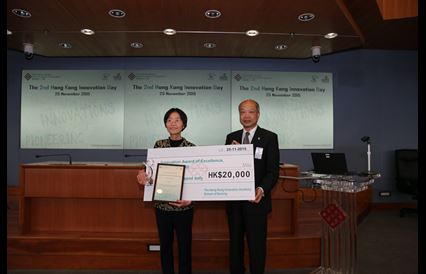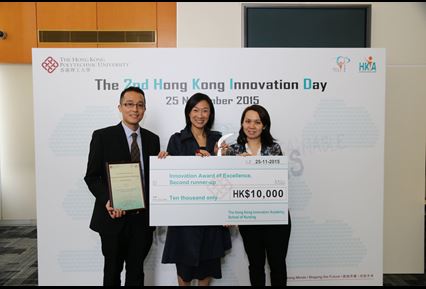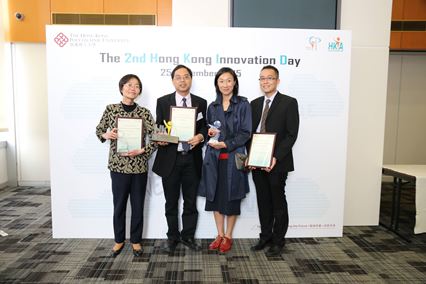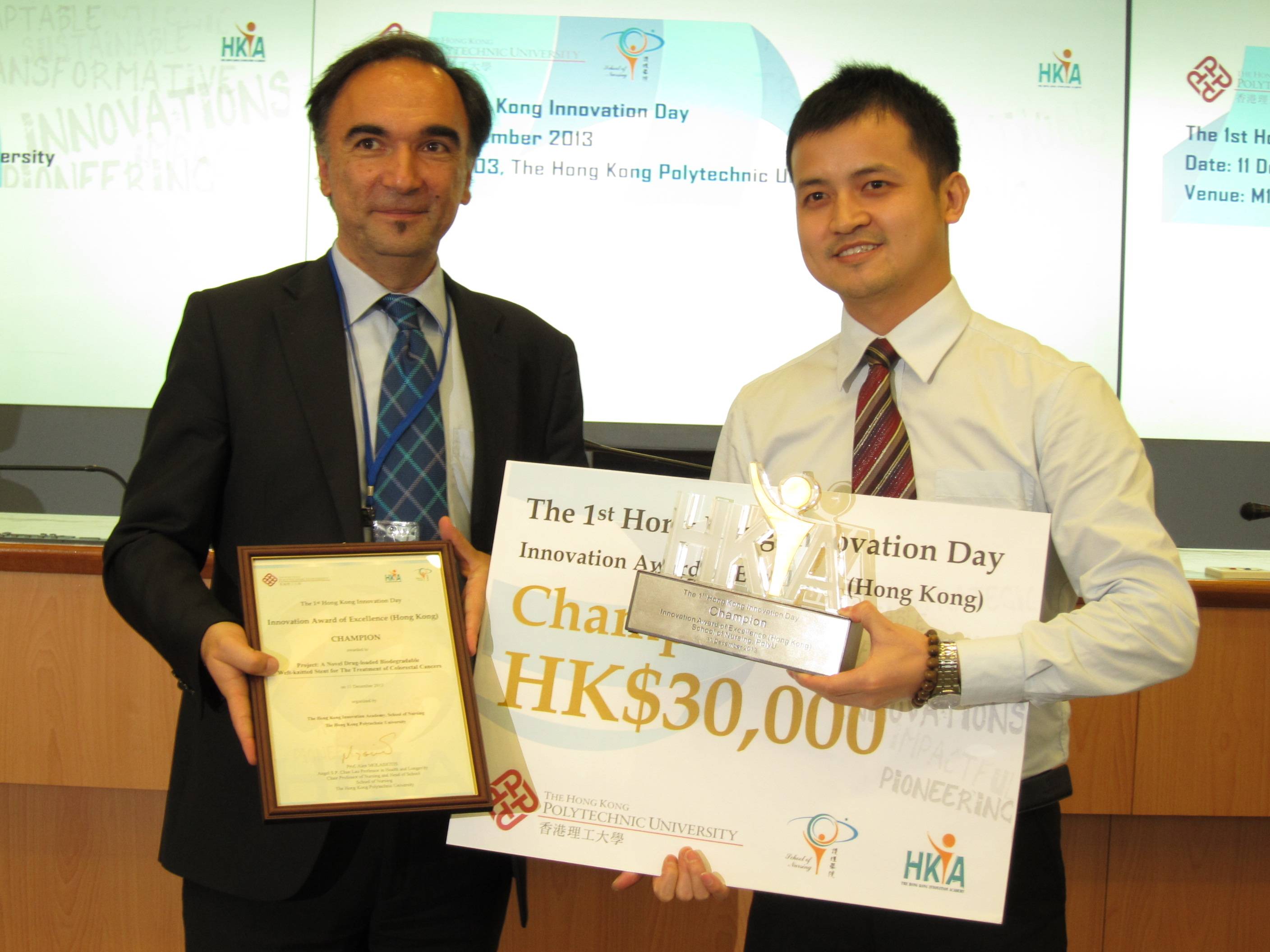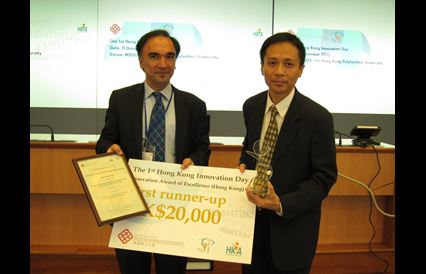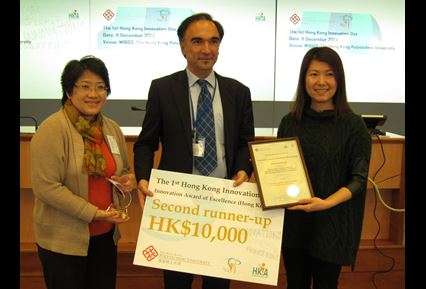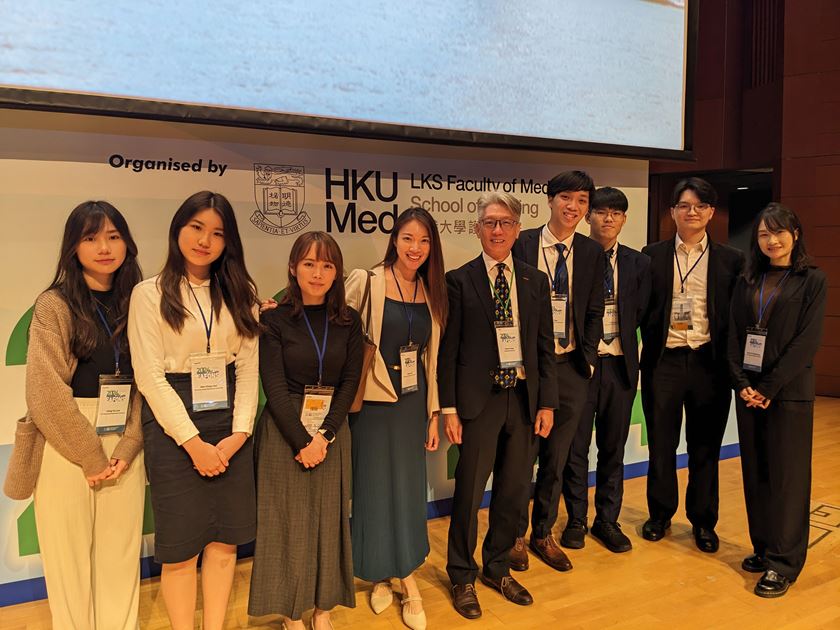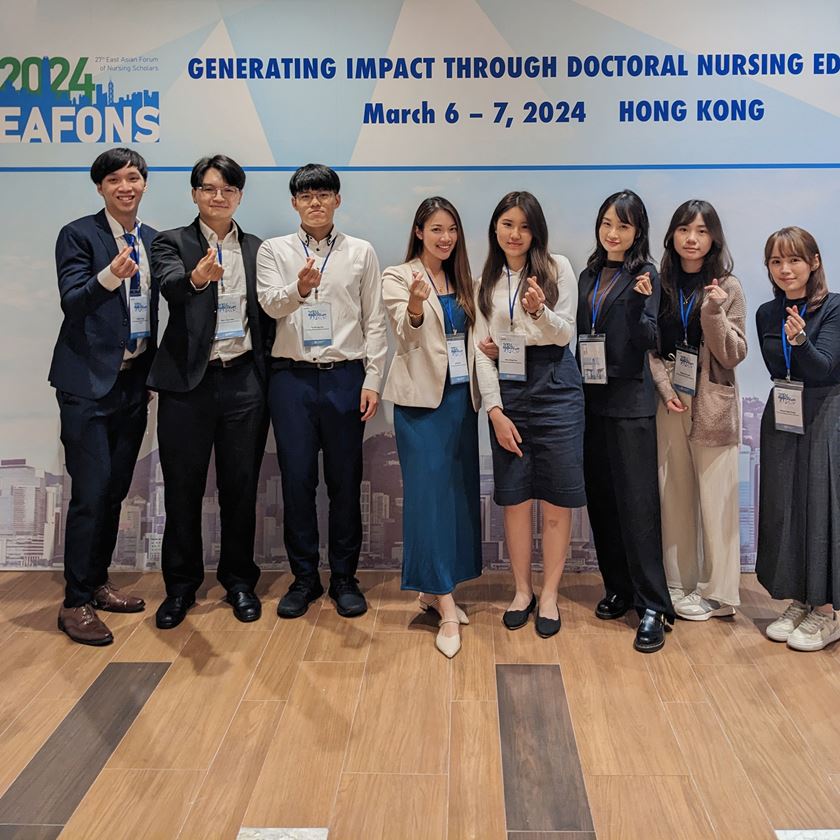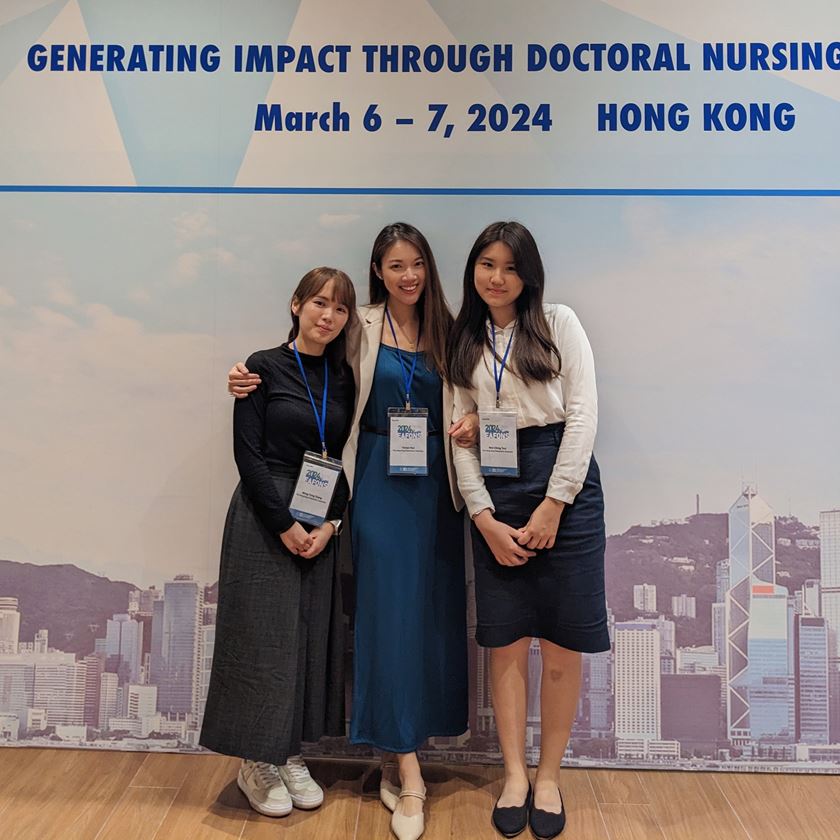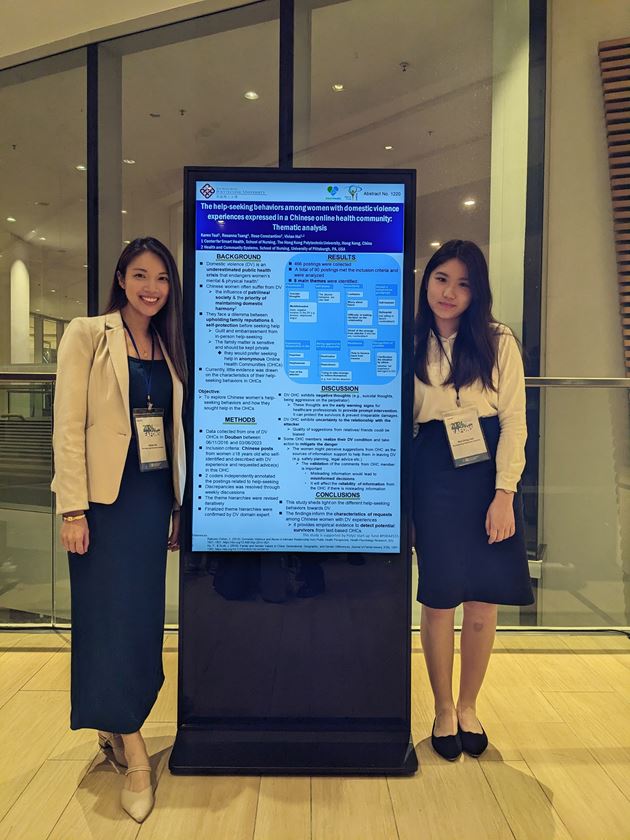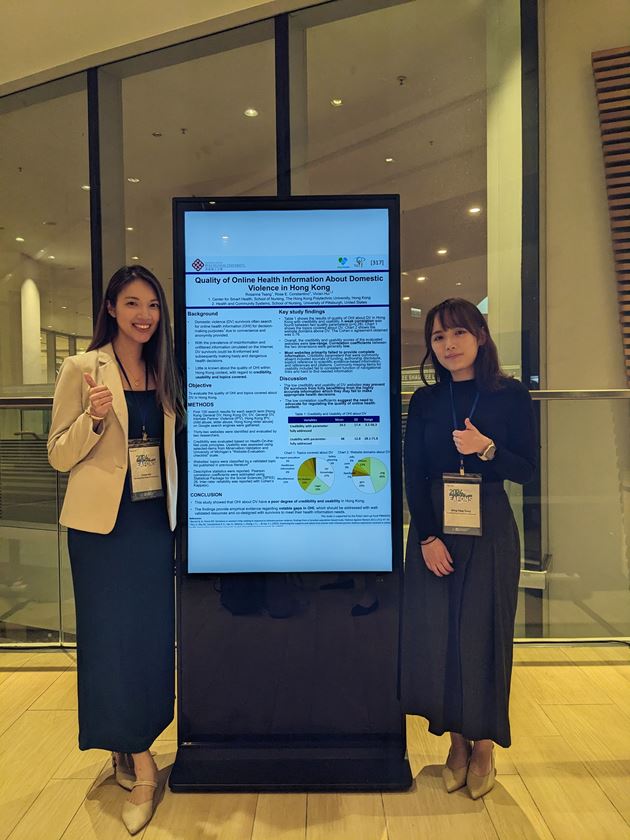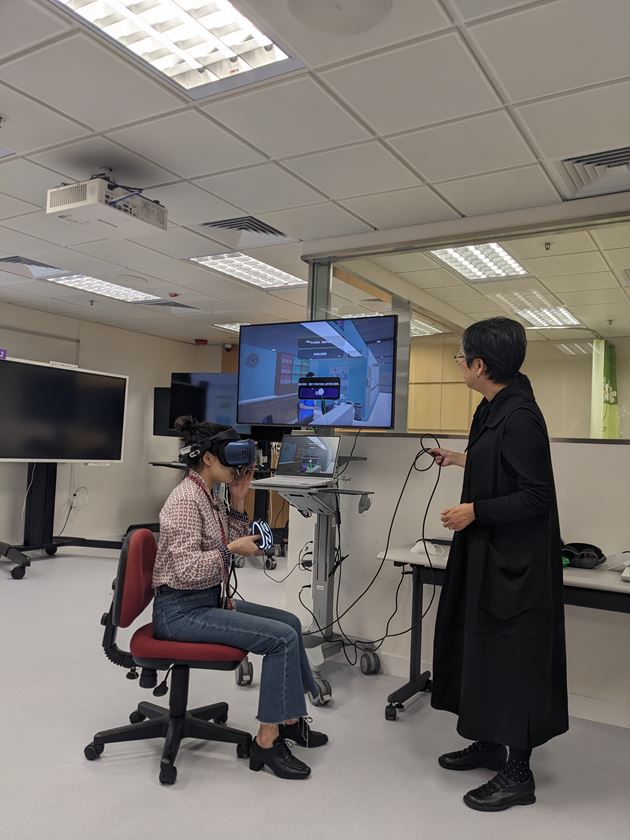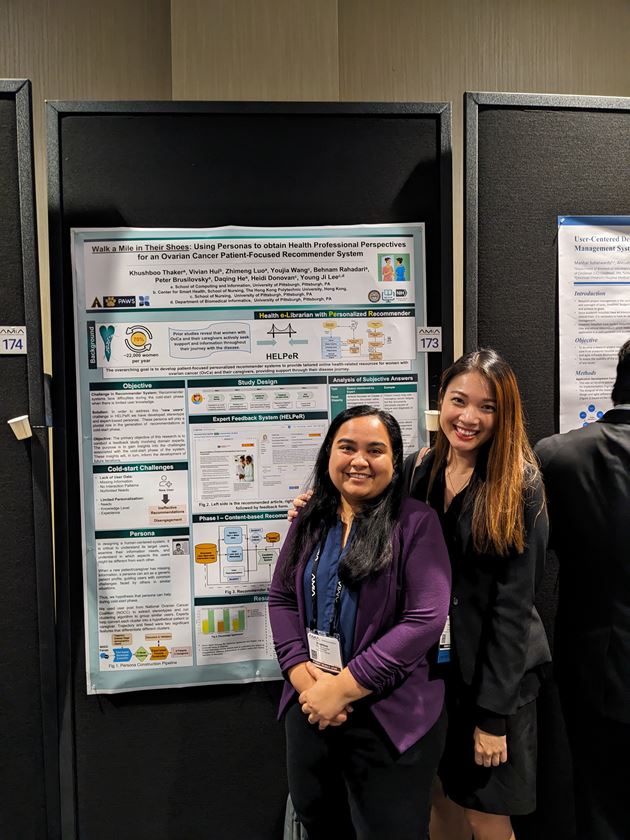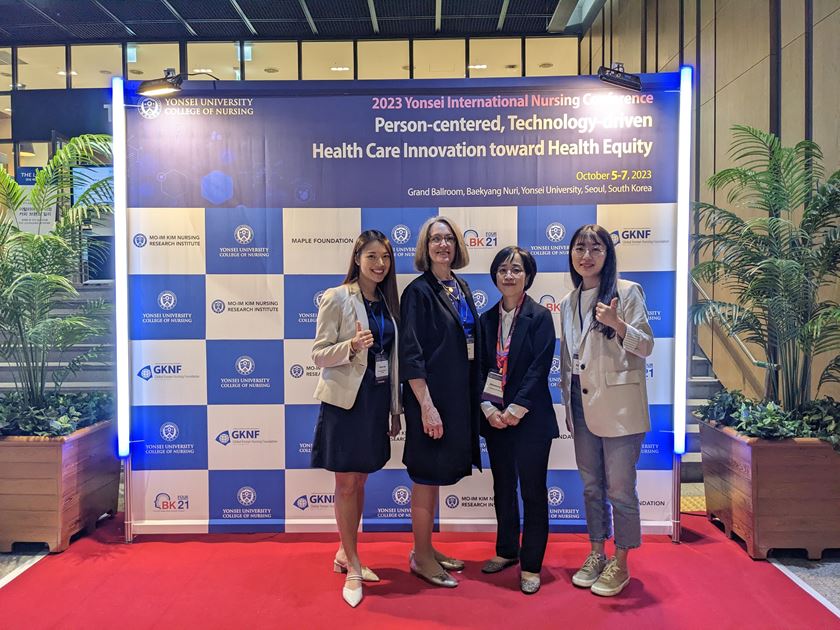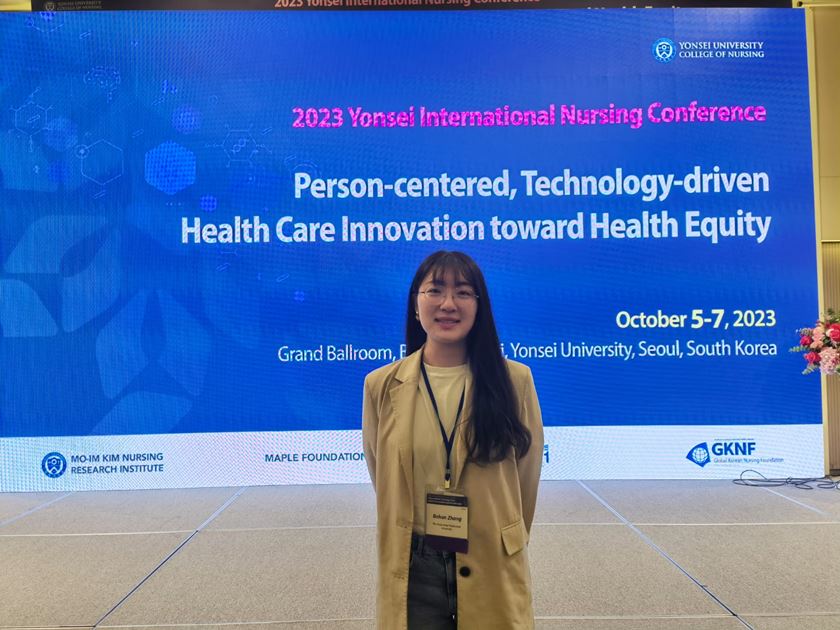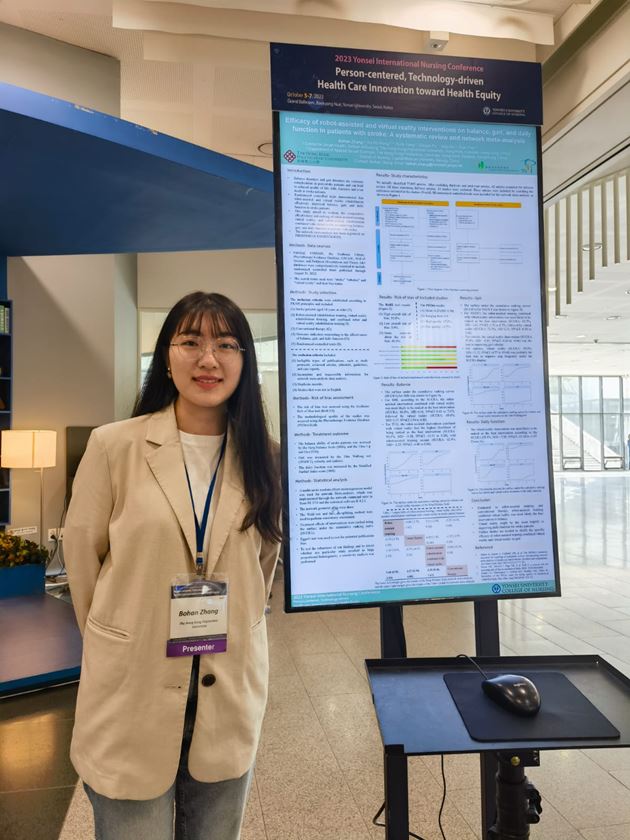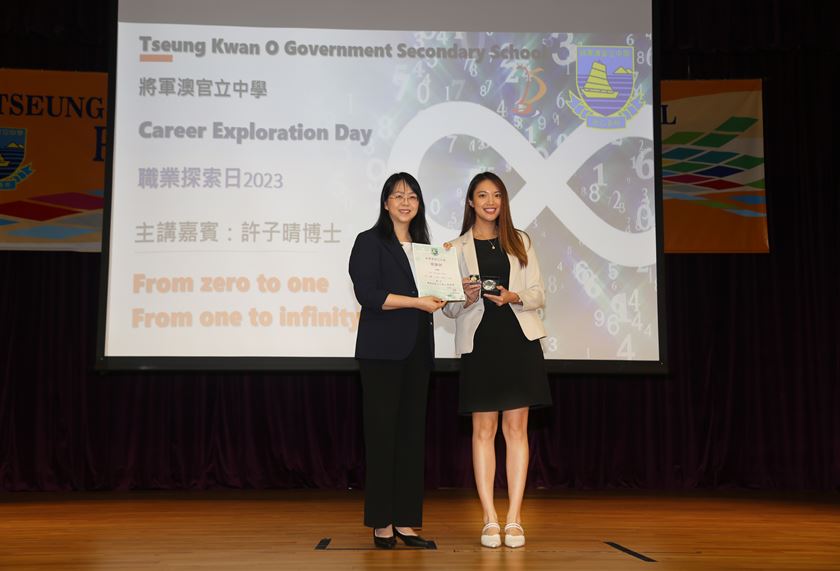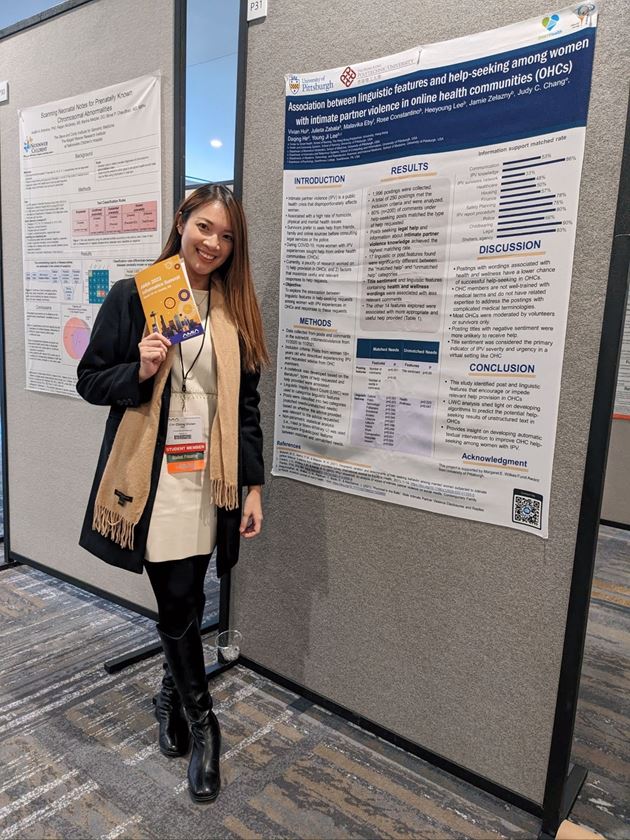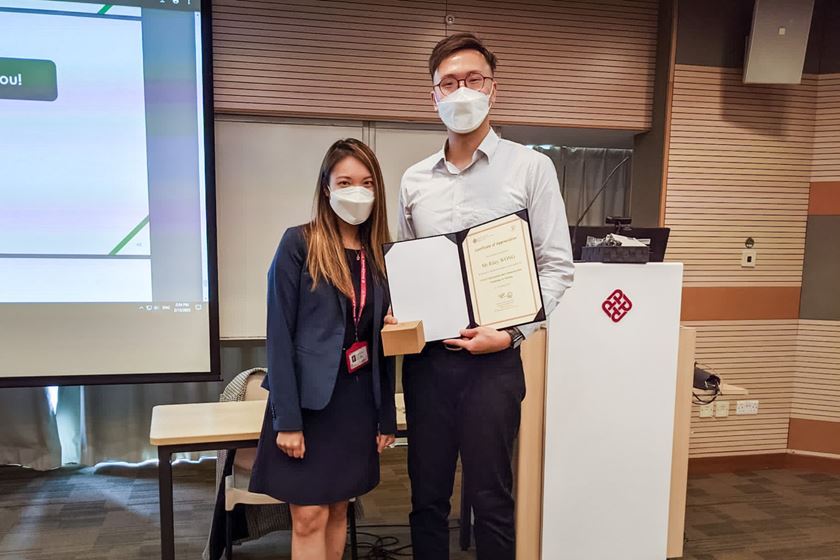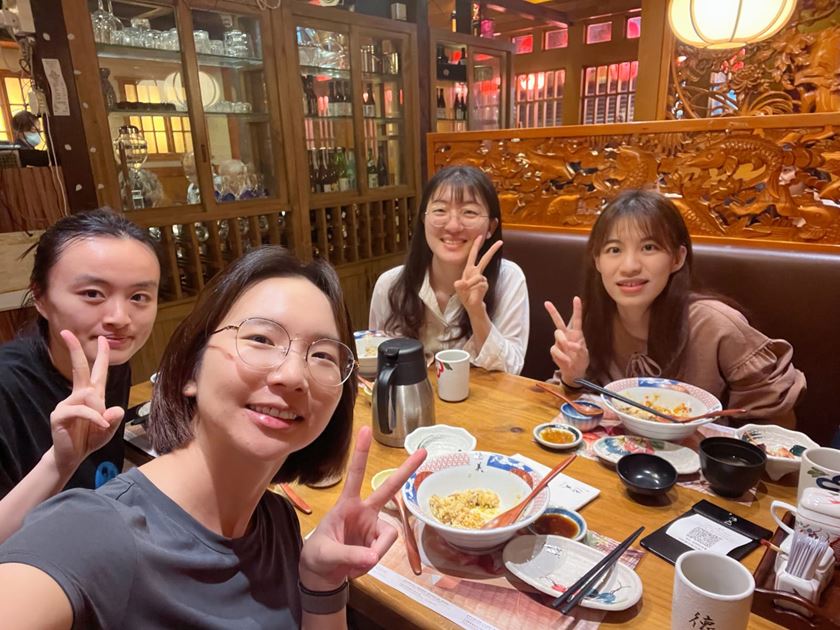智能健康研究中心

News

Centre for Smart Health
The Centre for Smart Health is on a mission to advance healthcare through cutting-edge technology by fostering healthcare innovation, improving the efficiency of clinical workflow and leveraging big data techniques to improve patient outcomes. It was initially led by Prof. Thomas Choi. Under his leadership, our center has obtained 10 RGC funded projects, totally HK$64m, in the capacity of PI/PC and Co-PI, including 8 GRFs (PI: Choi & Qin), 1 RIF (Co-PI: Choi), and 1 TRS (Sub-theme PI: Qin, Co-PI: Choi; HK$50.6m); and 10 ITF projects, totalled HK$22m in the capacity of PI (Qin & Choi). Our Centre also obtained HK$30m donation to set up the PolyU-Henry G. Leong Mobile Integrative Health Centre and HK$0.9m to set up the Scholarship for Centre for Smart Health. Recognized nationally and internationally, including the National Natural Science Award, Hong Kong ICT Awards, Hong Kong Innovation Academy Awards and International Exhibition of Innovations of Geneva. We are the Centre for Smart Health, transforming the healthcare innovation through advanced technology.
Vision
Our vision for the Centre for Smart Health is to revolutionize healthcare by integrating advanced technology and personalized care. We aspire to redefine the boundaries of medical science by harnessing the power of artificial intelligence, machine learning, and big data analytics to transform patient care. Our goal is to develop cutting-edge, technology-driven solutions that enable predictive and precision medicine, thereby improving health outcomes and quality of life.
History
The Centre for Smart Health was originated from the Centre for Telehealth and Telecare founded in 2002 under the Area of Strategic Development of the PolyU.
It was renamed as the Centre for Integrative Digital Health (CIDH) in 2006.
It was then renamed as present Centre for Smart Health in 2013.
Research Areas
- Peer Support Virtual Reality-based Intervention for AD/HD Carers - Stress Relieving and Empathy Improving Programme
This project is focused on creating a virtual reality-based intervention program for individuals caring for individuals with Attention Deficit Hyperactivity Disorder (AD/HD). The program aims to provide a unique and innovative approach to support and educate caregivers, setting it apart from the application in question. The virtual reality technology allows for an immersive and interactive experience, which can help caregivers better understand and manage the challenges associated with AD/HD. The program's development is an important step in addressing the needs of AD/HD caregivers and improving the overall quality of care provided.
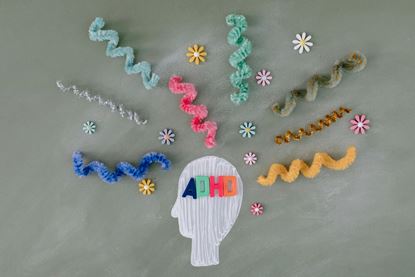
- Virtual/Augmented Reality Based Planning and Intraoperative Guidance for Precise Laparoscopic Cystectomy via Advanced Human-in-the-loop Image Segmentation, Visualization, and Registration Techniques
The primary objective of this project is to design and implement a planning and intraoperative guidance system that leverages the advanced technology of virtual and augmented reality. This system is specifically targeted towards enhancing the precision of laparoscopic cystectomy procedures. The innovative use of virtual and augmented reality technology sets this project apart from other applications. It is designed to provide surgeons with a more accurate and detailed view of the surgical area, thereby improving the precision and safety of the procedure. Therefore, it's fair to say that this project, with its unique focus and application of cutting-edge technology, stands in stark contrast to other applications in the field.

- Virtual Reality Motor-cognitive Training for Older People with Cognitive Frailty
The project aims at developing virtual reality motor-cognitive training system for older people with cognitive frailty, and hence is different from the application.
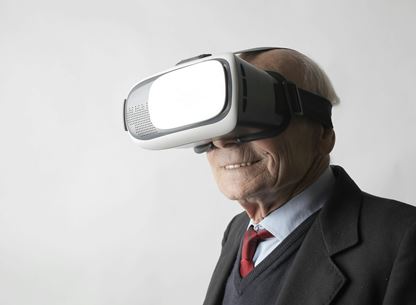
- Effectiveness of social virtual-reality on enhancing social interaction skills in children with attention-deficit/hyperactivity disorder: a three-arm pilot randomized controlled trial
This RCT is the first study examining the feasibility and effectiveness of a social VR-based intervention for enhancing the social interaction skills of children with ADHD in Hong Kong.
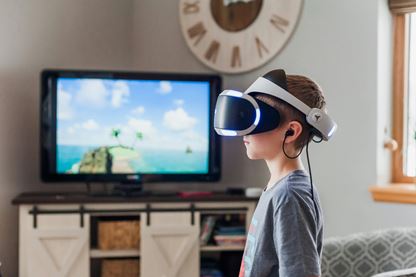
- Virtual Haptic System for Intuitive Planning of Bone Fixation Plate Placement
Pre-contoured fixation plates treat bone fractures. A new 3D haptic interface VR system improves preoperative planning. It allows intuitive manipulation of virtual plates for optimal placement on the distal medial tibia. This system provides interactive feedback and visual guidance, enhancing accuracy. Processes like 3D model creation, collision detection, and dynamics simulation are discussed. Evaluation with 22 subjects shows shorter placement time and higher satisfaction compared to traditional methods, promising better fixation plate placement and design.
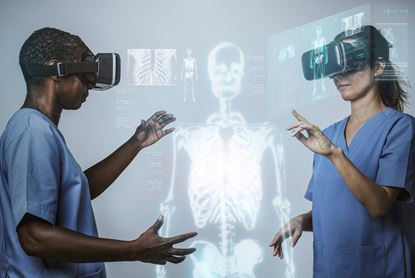
- A framework using cluster-based hybrid network architecture for collaborative virtual surgery
Research on collaborative virtual environments (CVEs) facilitates simulating cooperative surgical work, yet implementing high-performance systems is challenging due to maintaining state consistency amid network latencies, especially with complex models and haptics. A paper introduces a cluster-based hybrid network framework for collaborative virtual surgery. It employs multicast transmission and an administrative server for consistency. Reliable multicast and failure detection ensure robustness. Overhead is reduced with management approaches. The framework successfully extends an orthopedic surgery trainer into a collaborative system, validated through experiments showing its capability.
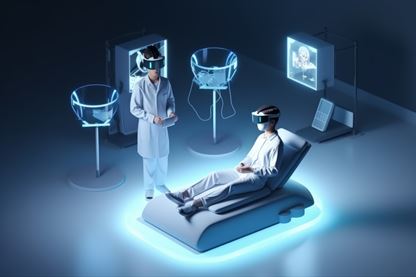
- A Virtual Reality Based Simulator for Nasogastric Tube Placement Training
In this project, a virtual reality based training simulation system is proposed to facilitate the training of NGT placement. It focuses on the simulation of tube insertion and the rendering of the feedback forces with a haptic device. Both physically based method and heuristic approach using fuzzy logic are used to develop the force models.
- Intelligent Planning and Intraoperative Guidance System for Precise Zygomatic Implant via Advanced Augmented Reality Techniques
The project focuses on creating an advanced augmented reality system for zygomatic implant planning and guidance, ensuring precise and accurate placement of the implant during surgery. This innovative approach sets it apart from other similar applications.
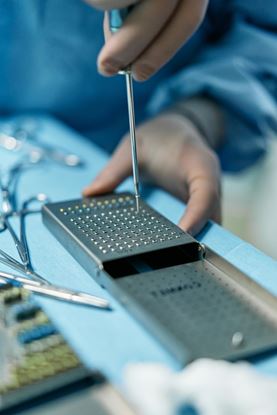
- Text Mining on Online Health Communities
This project leveraged Latent Dirichlet Allocation (LDA) topic modeling, sentiment analysis, network analysis, and linguistic inquiry word count (LIWC) to explore the information, emotional needs, and help-seeking behaviors among women with DV experiences from online health communities.
- Large Language Models for Information Support
This study used large language model LLaMa2 to predict the information and emotional support among survivors of abuse.
- AI-enhanced Support Group Intervention
This project initiated a virtual support group to improve well-being of patients with AI-enhanced features.
- Deep Learning Models for Emotional Support Detection
This study leveraged fine-tuned deep learning model to predict emotional needs among women with traumatic experiences.

- CMR++: A Software Toolkit for High-Fidelity and Fast 4D Cardiac Cine MRI Reconstruction and Quantification via Advanced Diffusion Models
This project It endeavors to create a sophisticated software toolkit that enhances the reconstruction and quantification of 4D cardiac cine MRI images. By integrating advanced diffusion models, CMR++ aims to significantly improve the fidelity and speed of image processing, offering a more efficient and accurate tool for medical professionals. This innovation stands distinct in its approach to utilizing cutting-edge computational techniques to address the challenges in cardiac imaging, thereby facilitating better diagnosis and treatment planning for cardiovascular diseases.
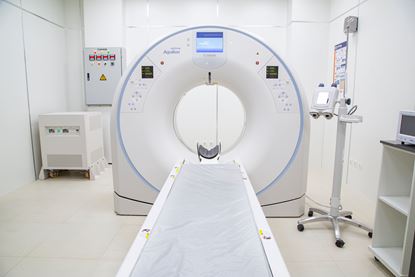
- Cardiac-Flow: A Precise yet Super-Efficient Diagnosis System for Coronary Artery Disease Based on Deep Learning and Computational Fluid Dynamics
This project seeks to develop a state-of-the-art system that leverages the synergy between deep learning algorithms and computational fluid dynamics to offer unprecedented precision and efficiency in diagnosing CAD. This system aims to significantly reduce the time and complexity involved in the diagnosis process, while maintaining, or even enhancing, the accuracy of the assessments. By doing so, "Cardiac-Flow" stands out as a pioneering approach in the medical field, differentiating itself through its innovative use of advanced computational techniques to address one of the most prevalent cardiovascular diseases globally. This project promises to be a valuable tool for healthcare professionals, enabling faster, more accurate diagnoses and potentially improving outcomes for patients with coronary artery disease.

- Clinically Applicable AI-empowered System for Diagnosis of Congenital Heart Disease in Infants
This project initiative focuses on harnessing the power of AI algorithms to analyze and interpret complex medical data with the goal of identifying CHD with high accuracy and efficiency. By integrating AI into the diagnostic process, this project seeks to provide a tool that is not only effective in diagnosing CHD at an early stage but is also designed to be easily integrated into clinical settings. The ultimate objective is to offer a solution that supports pediatric cardiologists and healthcare providers in making more informed decisions, thereby improving the prognosis and treatment outcomes for infants affected by this challenging condition. This endeavor stands out by bridging advanced AI technology with practical clinical applications, setting a new standard for early and accurate diagnosis of congenital heart diseases in the youngest patients.

- Intelligent Planning and Intraoperative Guidance System for Precise Zygomatic Implant via Advanced Augmented Reality Techniques
This project intends to develop a state-of-the-art system that utilizes advanced augmented reality (AR) techniques to facilitate intelligent planning and provide real-time intraoperative guidance. This innovative approach aims to significantly improve the accuracy of implant placement, reduce surgical complications, and optimize patient outcomes. By integrating AR technology, the system will allow surgeons to visualize the anatomical structures and implant positioning in 3D, overlaying this information onto the patient's actual surgical site. This project stands as a pioneering effort to combine cutting-edge AR technology with dental surgery, promising a transformative tool for maxillofacial surgeons and enhancing the standard of care for patients requiring zygomatic implants.


Director, Professor
- HJ540
- +852 2766 6424
- harry.qin@polyu.edu.hk

Assistant Professor
- HJ544
- +852 2766 4691
- vivianc.hui@polyu.edu.hk
- Ruize CUI, PhD Student
- Yidan FENG, PhD Student
- Sen DENG, PhD Student
- Bingchen GAO, PhD Student
- Jun ZHOU, PhD Student
- Bohan ZHANG, PhD Student
- Xudong KANG , PhD Student (Part-time)
- Yiliang CHEN, Mphil Student
- Jing ZOU, Postdoctoral Fellow
- Cheng XU, Postdoctoral Fellow
- Dorothy YAO, Postdoctoral Fellow
- Cheng ZHAO, Postdoctoral Fellow
- Rowen WANG, Postdoctoral Fellow
- Cai GUO, Postdoctoral Fellow
- Shuyang CHEN, Postdoctoral Fellow
- Bo LIANG, Research Assistant
- Shuang LIANG, Research Assistant
- David ZHANG, Research Assistant
- Sky WU, Research Assistant
- Feiyang ZHENG, Research Assistant
- Yiyang SHEN, Research Assistant
- Exusiai LIN, Research Assistant
- Lanqing LIU, Research Assistant
- Wing Tung Rosanna TSANG, BSN Student Research Assistant
- Wai Ching Karen TSUI, BSN Student Research Assistant
- Shaowei Frank GUAN, BSc Student Research Assistant
- Zhengyu ZHANG, BSc Student Research Assistant
- Yiqing YANG, BSc Student Research Assistant
- Khushboo Thaker - Information Science, University of Pittsburgh
- Dr Siobhan O'Connor - Nursing, Kings College London
- Prof. Julia Xiao - Nursing, Capital Medical University
- Prof. Su-Fen Cheng - Nursing, National Taipei University of Nursing and Health Sciences
- Prof. Heejung Kim - Nursing, Yonsei Unviersity
- Dr Zhao Ni -Nursing, Yale University
- Pheng-Am Heng - Computer Science and Engineering, The Chinese University of Hong Kong
- Qi Dou - Computer Science and Engineering, The Chinese University of Hong Kong
- Hao Chen - Computer Science and Engineering , The Hong Kong University of Science and Technology
- Lequan Yu - Statistics and Actuarial Science, The University of Hong Kong
- Di Wu - Computer Science, Sun Yat-Sen University
Publications
- Zhang, B., Wong, A.K.C., Constantino, R.E., Hui, V. (2024) The association between psychological distress and abusive experiences among people with intimate partner violence – A cross-sectional study from Pittsburgh 2015 Allegheny County Health Survey. BMC Public Health (Accepted)
- Hui, V., Zhang, B., Jeon, B., Wong, A.K.C., Klem, ML., Lee, YJ. (2023) Harnessing health information technology in domestic violence in the United States – a scoping review. Public Health Reviews (Accepted)
- Zhang, B,. Guo, C., Hui, V., Wong, KP., Liu, Y., Liu, Z., Xu, Y., Xiao, Q., Chen, SC., Qin, H. (2023) Evaluating the effectiveness of video-game based swallowing function training in patients with dysphagia: study protocol for a randomized controlled trial. Trials, 24(1),735. https://doi.org/10.1186/s13063-023-07738-7
- Hui, V., Eby, M., Constantino R.E., Chang J., Zelazny, J., He. D., Lee. HY., Lee YJ. (2023) Examining supports and advice that women with intimate partner violence experience received in online health communities – text mining approach. Journal of Medical Internet Research http://doi.org/10.2196/48607
- O’Connor, S., Peltonen, LM., Topaz, M., Chen, LYA., Michalowski, M., Ronquillo, C., Stiglic, G., Chu, C.H., Hui, V., Denis-Lalonde, D. (2023) Prompt engineering when using generative AI in nursing education. Nurse Education in Practice. https://doi.org/10.1016/j.nepr.2023.103825
- Hui, V., Constantino, R. E., & Lee, Y. J. (2023). Harnessing Machine Learning in Tackling Domestic Violence—An Integrative Review. International Journal of Environmental Research and Public Health, 20(6), 4984. https://doi.org/10.3390/ijerph20064984
- Mahmoud, K, Jian, Z., Kim, D.K., Hui, V., Kitutu, J. (2023) Predictors of first-time NCLEX-RN pass-rate in Accelerated Bachelor of Science in Nursing. Journal of Nursing Education, 63(1), 10-16. https://doi.org/10.3928/01484834-20231112-04
- Oniani, D., Sreekumar, S., DeAlmeida, R., DeAlmeida, D., Hui, V., Lee, Y. J., ... & Wang, Y. (2022). Toward Improving Health Literacy in Patient Education Materials with Neural Machine Translation Models. American Medical Informatics Association. Informatics Summit 2023. Conference paper. arXiv preprint arXiv:2209.06723.
- Chi, Y., Thaker, K., He, D., Hui, V., Donovan, H., Brusilovsky, P., & Lee, Y. J. (2022). Knowledge Acquisition and Social Support in Online Health Communities: Analysis of an Online Ovarian Cancer Community. JMIR cancer, 8(3), e39643. https://doi.org/10.2196/39643
- Thanker, K., Chi, Y., Brusilovsky, P., Donovan, H., Klem, ML.,He, D., Hui, V., &Lee YJ. (2021) Understanding article sharing amongst OvCa Patients to enhance Patient-Centric Recommendation Engine. Journal of Medical Internet Research Cancer 10.2196/33110. Advance online publication
http://doi.org/10.2196/33110 - Hui, V., Brazee, R., Rosenzweig, M., Lee YJ. (2022) The Association Between Hormone Receptor Status and End-of-Life Care Among Patients with Metastatic Breast Cancer (MBC). Clinical journal of oncology nursing, 26(2), 198–203. https://doi.org/10.1188/22.CJON.198-203
- Howell, B., Deyo, P., Swartwout, E., Herdman, N., Caldwell, V., Miller, C. H. C., & Hui, V. (2021). Impact of Patient Engagement on Tailored Education for Joint Replacement Population Using Technology. CIN: Computers, Informatics, Nursing http://doi.org/10.1097/CIN.0000000000000761
- Hui, V., Constantino, R.E. The association between life satisfaction, emotional support, and perceived health among women who experienced intimate partner violence (IPV) – 2007 behavioral risk factor surveillance system. (2021) BMC Public Health 21, 641 https://doi.org/10.1186/s12889-021-10665-4
- Tiwari, A., Cheung, D., & Hui, V. (2018). Improving mental health outcomes of Chinese women survivors of intimate partner violence through advocacy interventions. Global Mental Health (Cambridge, England), 5, e15. https://doi.org/10.1017/gmh.2018.5
- H. Wu, B. Zhang, C. Chen, J. Qin. Federated Semi-supervised Medical Image Segmentation via Prototype-based Pseudo-labeling and Contrastive Learning, accepted to be published on IEEE Transactions on Medical Imaging, Sept. 2023. (IF: 10.6) (DOI: 10.1109/TMI.2023.3314430)
- Y. Liang, B. Deng, W. Liu, J. Qin, and S. He. Monocular depth estimation for glass walls with context: a new dataset and method, accepted to be published in IEEE Transactions on Pattern Analysis and Machine Intelligence, August 2023. (IF: 23.6) (DOI: 10.1109/TPAMI.2023.3308551)
- H. Wu, B. Zhang, Z. Li, J. Qin, and T. Y. Lee. 3DSN-Net: A 3-D Scale-Aware convNet With Nonlocal Context Guidance for Kidney and Tumor Segmentation From CT Volumes, accepted to be published in IEEE Transactions on Cybernetics, July 2023. (IF: 11.8) (DOI: 10.1109/TCYB.2023.3291369)
- H. Wu, Z. Wang, Z. Zhao, C. Chen, and J. Qin. Continual Nuclei Segmentation via Prototype-wise Relation Distillation and Contrastive Learning, accepted to be published in IEEE Transactions on Medical Imaging, pp1-1. (IF: 10.6) (DOI: 10.1109/TMI.2023.3307892)
- Y. Zhou, H. Wu, W. Liu, Z. Xiong, J. Qin, and S. He. Single-View View Synthesis with Self-rectified Pseudo-Stereo, accepted to be published in International Journal of Computer Vision. (IF: 19.5) (DOI:10.1007/s11263-023-01803-z)
- J. Wang, F. Chen, Y. Ma, L. Wang, Z. Fei, J. Shuai, X. Tang, Q. Zhou, and J. Qin. XBound-Former: Towards Cross-scale Boundary Modeling in Transformers, accepted to be published in IEEE Transactions on Medical Imagin. (IF: 10.6) (DOI:10.1109/TMI.2023.3236037)
- K. Wang, J. Xu, S. Zhang, J. Tan, J. Qin. Towards Low-budget Energy Efficiency Design in Additive Manufacturing Based on Variational Scale-aware Transformer, Journal of Cleaner Production, 393, 136168. (IF: 11.1) (DOI: 10.1016/j.jclepro.2023.136168)
- J. Lyu, G. Li, C. Wang, C. Qin, S. Wang, Q. Dou, J. Qin. Region-focused Multi-view Transformer-based Generative Adversarial Network for Cardiac Cine MRI Reconstruction, Medical Image Analysis, vol. 85, 102760. (IF: 10.9) (DOI: 10.1016/j.media.2023.102760)
- W. Hou, C. Lin, L. Yu, J. Qin, R. Yu, and L. Wang. Hybrid Graph Convolutional Network with Online Masked Autoencoder for Robust Multimodal Cancer Survival Prediction, IEEE Transactions on Medical Imaging, vol. 4, no. 8. (IF: 10.6) (DOI:10.1109/TMI.2023.3253760)
- Y. Zhang, J. Wang, Y. Liu, L. Rong, Q. Zheng, D. Song, P. Tiwari, and J. Qin. A Multitask Learning Model for Multimodal Sarcasm, Sentiment, and Emotion Recognition in Conversations, accepted to be published in Information Fusion, vol. 93, no. C. (IF: 18.6) (DOI: 10.1016/j.inffus.2023.01.005)
- H. Wu, C. Lin, J. Liu, Y. Song, Z. Wen, and J. Qin. Feature Masking on Non-overlapping Regions for Detecting Dense Cells in Blood Smear Image, IEEE Transactions on Medical Imaging, vol. 42, no. 6, pp. 1668-1680. (IF: 11.037). (DOI: 10.1109/TMI.2023.3234688)
- M. Wei, Z. Wei, H. Zhou, F. Hu, H. Si, Z. Chen, Z. Zhu, J. Qiu, X. Yan, Y. Guo, J. Wang, and J. Qin. AGConv: Adaptive Graph Convolution on 3D Point Clouds, accepted to be published in IEEE Transactions on Pattern Analysis and Machine Intelligence. (IF: 24.314) (DOI: 10.1109/TPAMI.2023.3238516)
- Y. Liu, S. Ren, L. Chai, H. Wu, D. Xu, J. Qin, and S. He. Reducing Spatial Labeling Redundancy for Semi-supervised Crowd Counting, accepted to be published in IEEE Transactions on Pattern Analysis and Machine Intelligence. (IF: 23.6) (DOI: 10.1109/TPAMI.2022.3232712)
- J. Lyu, G. Li, C. Wang, Q. Cai, Q. Dou, D. Zhang, and J. Qin. Multi-contrast MRI Super-Resolution via Transformer-empowered Multi-scale Contextual Matching and Aggregation, accepted to be published in IEEE Transactions on Neural Networks and Learning Systems. (IF: 14.255) (DOI: 10.1109/TNNLS.2023.3250491)
- Y. Song, J. Y. C. Teoh, K. S. Choi, and J. Qin. Dynamic Loss Weighting for Multiorgan Segmentation in Medical Images, accepted to be published in IEEE Transactions on Neural Networks and Learning Systems. (IF: 14.255) (DOI: 10.1109/TNNLS.2023.3243241)
- S. Liang, W. Hang, B. Lei, J. Wang, J. Qin, K. S. Choi, and Y. Zhang. Adaptive Multimodel Knowledge Transfer Matrix Machine for EEG Classification, accepted to be published in IEEE Transactions on Neural Networks and Learning Systems, 2022, (IF: 14.255) (DOI: 10.1109/TNNLS.2022.3220551)
- Y. Song*, L. Yu, B. Lei, K. S. Choi, and J. Qin. Data Discernment for Affordable Training in Medical Image Segmentation, IEEE Transactions on Medical Imaging, vol. 42, no. 5, pp. 1431-1445. (IF: 11.037). (DOI: 10.1109/TMI.2022.3228316).
- C. Zhao, W. Chen, J. Qin, P. Yang, Z. Xiang, A. F. Frangi, M. Chen, S. Fan, W. Yu, X. Chen, B. Xia, T. Wang, B. Lei. IFT-Net: Interactive Fusion Transformer Network for Quantitative Analysis of Pediatric Echocardiography, Medical Image Analysis, vol.82, 2022. (IF: 10.9) (DOI: 10.1016/j.media.2022.102648)
- P. Huang, P. He, S. Tian, M. Ma, P. Feng, H. Xiao, F. Mercaldo, A. Santone, and J. Qin. A ViT-AMC Network with Adaptive Model Fusion and Multiobjective Optimization for Interpretable Laryngeal Tumor Grading from Histopathological Images, IEEE Transactions on Medical Imaging, vol. 42, no. 1, pp. 15-28. (IF: 11.037) (DOI: 10.1109/TMI.2022.3202248)
- H. Wu, J. Zhong, W. Wang, Z. Wen, and J. Qin. PolypSeg+: a Lightweight Context-aware Network for Real-time Polyp Segmentation, accepted to be published in IEEE Transactions on Cybernetics. (IF: 19.118) (DOI: 10.1109/TCYB.2022.3162873)
- H. Wu, J. Liu, F. Xiao, Z. Wen, L. Cheng, and J. Qin. Semi-supervised Segmentation of Echocardiography Videos via Noise-resilient Spatiotemporal Semantic Calibration and Fusion, Medical image Analysis, Volume 78, 102397, May 2022. (IF: 13.828) (DOI: 10.1016/j.media.2022.102397)
- H. Zhou, H. Chen, Y. Zhang, M. Wei, H. Xie, J. Wang, T. Lu, J. Qin, X. Zhang. Refine-Net: Normal Refinement Neural Network for Noisy Point Clouds, IEEE Transactions on Pattern Analysis and Machine Intelligence, vol.45, no.1. (IF: 24.314) (DOI: 10.1109/TPAMI.2022.3145877)
- B. Chen, Y. Xie, X. Wang, Z. Yuan, P. Ren, and J. Qin. Multikernel Correntropy for Robust Learning, IEEE Transactions on Cybernetics, vol. 52, no. 12, September 2021. (IF: 19.118) (DOI: 10.1109/TCYB.2021.3110732)
- H. Wu, W. Wang, J. Zhong, B. Lei, Z. Wen, and J. Qin. SCS-Net: A Scale and Context Sensitive Network for Retinal Vessel Segmentation, Medical image Analysis, vol. 70, no. 102025. (IF: 13.828) (DOI: 10.1016/j.media.2021.102025)
- W. Hou, L. Wang, S. Cai, Z. Lin, R. Yu, J. Qin. Early neoplasia identification in Barrett’s esophagus via attentive hierarchical aggregation and self-distillation, Medical Image Analysis, vol. 72, no. 102092. (IF: 13.828) (DOI: 10.1016/j.media.2021.102092)
- L. Guo, B. Lei, W. Chen, J. Du, A. F. Frangi, J. Qin, C. Zhao, P. Shi, B. Xia, T. Wang. Dual attention enhancement feature fusion network for segmentation and quantitative analysis of paediatric echocardiography, Medical Image Analysis, vol. 71, no. 102042. (IF: 13.828) (DOI: 10.1016/j.media.2021.102042).
- Z. Huang, H. Lei, G. Chen, A. F. Frangi, Y. Xu, A. Elazab, J. Qin, B. Lei. Parkinson's Disease Classification and Clinical Score Regression via United Embedding and Sparse Learning From Longitudinal Data, IEEE Transactions on Neural Networks and Learning Systems, vol.33, no.8, pp. 3357-3371, 2022. (IF: 14.255) (DOI: 10.1109/TNNLS.2021.3052652)
- Y. Jin, H. Li, Q. Dou, H. Chen, J. Qin, C. W. Fu, P. A. Heng. Multi-Task Recurrent Convolutional Network with Correlation Loss for Surgical Video Analysis, Medical Image Analysis, vol. 59, 101572, 2020. (IF: 13.828) (DOI: 10.1016/j.media.2019.101572)
- B. Lei, S. Huang, H. Li, R. Li, C. Bian, Y. H. Chou, J. Qin, P. Zhou, X. Gong, and J. Z. Cheng. Self-Co-Attention Neural Network for Anatomy Segmentation in Whole Breast Ultrasound, Medical Image Analysis, vol. 64, 101753, 2020. (IF: 13.828) (DOI: 10.1016/j.media.2020.101753)
- A. Nazir, M. N. Cheema, B. Sheng, H. Li, P. Li, P. Yang, Y. Jung, J. Qin, J. Kim, and D. D. Feng. OFF-eNET: An Optimally Fused Fully End-to-End Network for Automatic Dense Volumetric 3D Intracranial Blood Vessels Segmentation, IEEE Transactions on Image Processing, vol..29, pp. 7192-7202, 2020. (IF:11.041) (DOI: 10.1109/TIP.2020.2999854)
- B. Lei, Z. Xia, F. Jiang, X. Jiang, Z. Ge, Y. Xu, J. Qin, S. Chen, T. Wang, and S. Wang. Skin Lesion Segmentation via Generative Adversarial Networks with Dual Discriminators, Medical Image Analysis, vol. 64, 101716, 2020. (IF: 13.828) (DOI: 10.1016/j.media.2020.101716)
- Y. Liu, Q. Wen, H. Chen, W. Liu, J. Qin, G. Han, and S. He. Crowd Counting via Cross-stage Refinement Networks, IEEE Transactions on Image Processing, vol. 29, pp. 6800-6812, 2020. (IF:11.041) (DOI: 10.1109/TIP.2020.2994410)
- Y. Shen, B. Sheng, R. Fang, H. Li, L. Dai, S. Stolte, J. Qin, W. Jia, D. Shen. Domain-invariant interpretable fundus image quality assessment, Medical Image Analysis, vol. 61, 101654, 2020. IF: 13.828) (DOI: 10.1016/j.media.2020.101654)
- B. Lei, Y. Zhao, Z. Huang, X. Hao, F. Zhou, A. Elazab, J. Qin, and H. Lei. Adaptive sparse learning using multi-template for neurodegenerative disease diagnosis, Medical Image Analysis, vol. 61, 101632, 2020. (IF: 13.828) (DOI: 10.1016/j.media.2019.101632)
- L. Liu, X. Hu, L. Zhu, C. W. Fu, J. Qin, and P. A. Heng. ψ-Net: Stacking Densely Convolutional LSTMs for Sub-cortical Brain Structure Segmentation, IEEE Transactions on Medical Imaging, vol. 39, no. 9, pp. 2806-2817, 2020. (IF: 11.037) (DOI: 10.1109/TMI.2020.2975642)
- M. Wang, W. Xie, J. Zhang, and J. Qin. Industrial Applications of UHD Video Coding with an Optimized Super-SAO Framework, accepted to be published in IEEE Transactions on Industrial Informatics, 2020. (IF: 11.648) (DOI: 10.1109/TII.2020.2973733)
- C. Chen, Q. Dou, H. Chen, J. Qin, and P. A. Heng. Unsupervised bidirectional cross-modality adaptation via deeply synergistic image and feature alignment for medical image segmentation, IEEE Transactions on Medical Imaging, vol. 39, no. 7, pp. 2494-2505, 2020. (IF: 11.037) (DOI: 10.1109/TMI.2020.2972701)
- Y. Song*, L. Zhu*, J. Qin, B. Lei, B. Sheng*, and K. S. Choi. Segmentation of Overlapping Cytoplasm in Cervical Smear Images via Adaptive Shape Priors Extracted from Contour Fragments, IEEE Transactions on Medical Imaging (TMI), vol. 38, no. 12, pp. 2849-2862, 2019. (IF: 11.037) (DOI: 10.1109/TMI.2019.2915633)
- S. He*, C. Han, G. Han, and J. Qin. Exploring Duality in Visual Questions Driven Top-Down Saliency, IEEE Transactions on Neural Networks and Learning Systems (TNNLS), vol 31, no. 7, 2019. (IF: 14.255) (DOI: 10.1109/TNNLS.2019.2933439)
- Z. Yang, S. Ren, Z. Wu, N. Zhao, J. Wang, J. Qin, and S. He. NPF-200: A Multi-Modal Eye Fixation Dataset and Method for Non-Photorealistic Videos, accepted to be published in ACM MM 2023.
- J. Zhou, K. Chen, Q. Dou, L. Xu, and J. Qin. Deep Fusion Transformer Network with Weighted Vector-Wise Keypoints Voting for Robust 6D Object Pose Estimation, International Conference on Computer Vision (ICCV) 2023.
- Z. Zhu, H. Chen, X. He, W. Wang, M. Wei, J. Qin. SVDFormer: Complementing Point Cloud via Self-view Augmentation and Self-structure Dual-generator, International Conference on Computer Vision (ICCV) 2023.
- Y. Chen, S. He, Y. Jin, and J. Qin. Surgical Activity Triplet Recognition via Triplet Disentanglement, International Conference on Medical Image Computing and Computer Assisted Interventions (MICCAI) 2023.
- T. Quan, Y. Yuan, Y. Luo, T. Zhou, and J. Qin. Robust Exclusive Adaptive Sparse Feature Selection for Biomarker Discovery and Early Diagnosis of Neuropsychiatric Systemic Lupus Erythematosus, International Conference on Medical Image Computing and Computer Assisted Interventions (MICCAI) 2023.
- W. Hang, J. Li, S. Liang, Y. Wu, B. Lei, J. Qin, Y. Zhang, and K. S. Choi. FedEEG: Federated EEG Decoding Via inter-Subject Structure Matching, IEEE International Conference on Acoustics, Speech and Signal Processing (ICASSP) 2023, pp. 1-5.
- H. Wu, J. Lin, W. Xie, and J. Qin. Super-efficient Echocardiography Video Segmentation via Proxy- and Kernel-based Semi-supervised Learning, AAAI Conference on Artificial Intelligence (AAAI) 2023. (Oral, Acceptance rate: 4.1%)
- K. P. Wong, P. L. Teh, J. Qin. Tinkering in Sunway City: Sustainable Transportation and Mobility for Older Dwellers, International Conference on Human-Computer Interaction, pp. 417-428, July 2023.
- W. Hou, L. Yu, C. Lin, H. Huang, R. Yu, J. Qin, and L. Wang. H2-MIL: Exploring Hierarchical Representation with Heterogeneous Multiple Instance Learning for Whole Slide Image Analysis, AAAI Conference on Artificial Intelligence (AAAI) 2022. (Acceptance rate: 15%)
- J. Wang, X. Li, Y. Han, J. Qin, L. Wang, and Q. Zhou. Separated Contrastive Learning for Organ-at-Risk and Gross-Tumor-Volume Segmentation with Limited Annotation, AAAI Conference on Artificial Intelligence (AAAI) 2022. (Acceptance rate: 15%)
- H. Zhu, P. Li, H. Xie, X. Yan, D. Liang, D. Chen, M. Wei, and J. Qin. I Can Find You! Boundary-Guided Separated Attention Network for Camouflaged Object Detection, AAAI Conference on Artificial Intelligence (AAAI) 2022. (Acceptance rate: 15%)
- T. Quan, Y. Yuan, Y. Song, T. Zhou, and J. Qin. Fuzzy Structural Broad Learning for Breast Cancer Classification, The IEEE International Symposium on Biomedical Imaging (ISBI) 2022.
- H. Wu, J. Liu, W. Wang, Z. Wen, and J. Qin. Region-aware Global Context Modeling for Automatic Nerve Segmentation from Ultrasound Images, AAAI Conference on Artificial Intelligence (AAAI) 2021, pp. 2907-2915. (Acceptance rate: 21%)
- H. Wu, J. Zhong, W. Wang, Z. Wen, and J. Qin. Precise yet Efficient Semantic Calibration and Refinement in ConvNets for Real-time Polyp Segmentation from Colonoscopy Videos, AAAI Conference on Artificial Intelligence (AAAI) 2021. (Acceptance rate: 21%)
- C. Ye, H. Zhang, X. Xu, W. Cai, J. Qin, and K. S. Choi. Object Detection in Densely Packed Scenes via Semi Supervised Learning with Dual Consistency, International Joint Conference on Artificial Intelligence (IJCAI) 2021. (Acceptance rate: 13.9%)
- S. Deng, Y. Feng, M. Wei, H. Xie, Y. Chen, J. Li , X. P. Zhang, and J. Qin. Direction-aware Feature-level Frequency Decomposition for Single Image Deraining, International Joint Conference on Artificial Intelligence (IJCAI) 2021. (Acceptance rate: 13.9%)
- X. Hu, L. Zhu*, C. W. Fu, J. Qin and P. A. Heng#, Direction-aware spatial context features for shadow detection, The IEEE Conference on Computer Vision and Pattern Recognition (CVPR), 2019. (Oral Presentation, Acceptance Rate: 2.1%)
- X. Yang, L. Yu*, S. Li, X. Wang, N. Wang, J. Qin, D. Ni, P. A. Heng#, Towards Automatic Semantic Segmentation in Volumetric Ultrasound, International Conference on Medical Image Computing and Computer Assisted Interventions (MICCAI), pp. 711-719, 2017. (Oral, Acceptance Rate: ~5%)
- H. Chen*, Q. Dou*, J. Qin, J. C. Y. Cheng, P. A. Heng#. 3D Fully Convolutional Networks for Intervertebral Disc Localization and Segmentation, The International Conference on Medical Imaging and Augmented Reality, pp. 375-382, 2016. (Best Paper Award)
- L. Yu*, X. Yang, J. Qin, and P. A. Heng. 3D FractalNet: Dense Volumetric Segmentation for Cardiovascular MRI Volumes, The First International Workshop, RAMBO 2016 and HVSMR 2016, Held in Conjunction with MICCAI 2016, pp. 103-110, 2016.
- B. Duan, R. Wen, C. B. Chng, W. Wang*, P. Liu*, J. Qin, J. L. Peneyra, S. K. Y. Chang, P. A. Heng, C. K. Chui. Image-guided Robotic System for Radiofrequency Ablation of Large Liver Tumor with Single Incision, The 12th International Conference on Ubiquitous Robots and Ambient Intelligence (URAI), pp. 284-289, 2015. (Best Application Paper Award)
- T. Zhang*, X. Wang, D. Liu, Q. Wang*, J. Qin, P. A. Heng. Segmentation-Based Automatic Transfer Function Design for Visualization of Medical Data, The 11th Asian Conference on Computer Aided Surgery (ACCAS 2015), 2015.
- P. Liu*, W. Wang*, Q. Wang*, J. Qin, X. Liu, J. Yang, P. A. Heng. Semiautomatic Liver Tumor Segmentation with 3D Level Set in Radiofrequency Ablation Treatment Planning, The 11th Asian Conference on Computer Aided Surgery (ACCAS 2015), 2015.
- Z. Chen*, W. Si*, J. Qin, T. T. Wong, P. A. Heng. Particle-based Fluid Simulation with Small Scale Details, The IEEE International Conference on Information Science and Technology, pp. 561-564, 2014 (Best Paper Finalist).
- X. Yang, D. Ni, J. Qin, S. Li, T. Wang, S. Chen, P. A. Heng. Standard Plane Localization in Ultrasound by Radial Component, IEEE International Symposium on Biomedical Imaging (ISBI), pp. 1180-1183, 2014.
- D. Ni, Y. Yang, S. Li, J. Qin, S. Ouyang, T. Wang, P. A. Heng. Learning Based Automatic Head Detection and Measurement from Fetal Ultrasound Images via Prior Knowledge and Imaging Parameters, IEEE International Symposium on Biomedical Imaging (ISBI), pp.772-775, 2013.
- P. Liu*, L. Shi, D. Wang, Y. Guo, J. Li, J. Qin, P. A. Heng. GPU Accelerated CBCT Reconstruction from Few Views with SART and TV Regularization, The Sixth International Workshop on High Performance Computing for Biomedical Image Analysis Held in Conjecture with MICCAI, 2013.
- D. Ni, T. Li, X. Yang, J. Qin, S. Li, C. T. Chin, S. Ouyang, T. Wang, S. Chen, Selective Search and Sequential Detection for Standard Plane Localization in Ultrasound, in The Workshop on Computational and Clinical Applications in Abdominal Imaging Held in Conjecture with MICCAI, pp.203-211, 2013.
- W. Wang*, J. Qin, Y. P. Chui, P. A. Heng. A Multiresolution Framework for Ultrasound Image Segmentation by Combinative Active Contour Models, The 35th Annual International Conference of the IEEE Engineering in Medicine and Biology Society (EMBC), pp.1144-1147, 2013.
- B. Li, X. Shan, J. Qin, W. Huang, N. An. SenseViewer: A Unified Rendering Interface of Visual and Haptic Cues in Medical Images, The IEEE International Conference on Robotics and Biomimetics (ROBIO), pp. 2209-2212, 2013.
- Hui, V., Constantino, RE. (2024) Forensic Nursing. From algorithms to empathy: machine learning in forensic nursing for intimate partner violence (pp. 234-260). Davis Company. (In press)
- Q. Dou*, H. Chen*, J. Qin, and P. A. Heng. Automatic lesion detection with three-dimensional convolutional neural networks, Chapter 9, Biomedical Information Technology (Second Edition), pp. 265-293, Elsevier Inc., 2020.
- X. Yang*, L. Yu*, Q. Dou*, J. Qin, and P. A. Heng. Deep Convolutional Networks for Automated Volumetric Cardiovascular Image Segmentation: From a Design Perspective, Chapter 18, Cardiovascular Imaging and Image Analysis, pp. 385-418, CRC Press, 2018.
- H. Chen*, Q. Dou*, L. Yu*, J. Qin, L. Zhao, V. C. T. Mok, D. Wang, L. Shi, P. A. Heng. Deep Cascaded Networks for Sparsely Distributed Object Detection from Medical Images, Chapter 6, Deep Learning for Medical Image Analysis, pp. 133-154, December 2017.
Achievement
- Effectiveness of social virtual-reality on enhancing social interaction skills in children with attention-deficit/hyperactivity disorder: a three-arm pilot randomized controlled trial, Health and Medical Research Fund (HMRF), Seed Project, Food and Health Bureau, 2023-2024. (PI: HK$ 497,836)
- Peer support virtual reality-based intervention for AD/HD carers --- stress relieving and empathy improving programme, Mental Health Initiatives Funding Scheme, 2023-2025. (PI: HK$ 1,975,045)
- Exploring the online help-seeking and health information-seeking behavior among women with domestic violence experiences in Hong Kong. The Start-up Fund for New Recruits, 2023-2025 (PI: HK$400,000)
- Joint Research Centre for Primary Health Care, Mainland/GBA Research Funding Scheme 2022/23, The Hong Kong Polytechnic University, 2023-2026. (Co-PI: HK7,500,000)
- Institute of Medical Intelligence and XR, Theme-based Research Scheme, Hong Kong University Grants Committee, 2023-2027. (Co-PI & PI of the Intraoperative AI-AR Assisted Surgery Program: HK$ 50.607 million)
- Clinically Applicable AI-empowered System for Diagnosis of Congenital Heart Disease in Infants, Innovation and Technology Fund - Guangdong-Hong Kong Technology Cooperation Funding Scheme (ITF-TCFS), Hong Kong Innovation and Technology Commission, 2022-2024. (PI: HK$ 2,048,600)
- Intelligent planning and intraoperative guidance system for precise zygomatic implant via advanced augmented reality techniques, Innovation and Technology Fund - Guangdong-Hong Kong Technology Cooperation Funding Scheme (ITF-TCFS), Hong Kong Innovation and Technology Commission, 2022-2024. (PI: HK$ 1,148,200)
- Non-wearable and non-invasive photonic sleep monitoring system based on optical fiber sensor with machine learning, Inter-Faculty Collaboration Scheme for FH, FHSS and FENG (IFC), The Hong Kong Polytechnic University, 2022-2024. (Co-PI: HK$ 500,000)
- What can we learn of subjective cognitive decline (SCD) from discourse comprehension? A neural speech tracking study, Inter-Faculty Collaboration Scheme for FH, FHSS and FENG (IFC), The Hong Kong Polytechnic University, 2022-2024. (Co-PI: HK$ 489,934)
- Patient-Specific Abdominal Aortic Aneurysm Rupture Risk Assessment via Advanced Deep Learning and Computational Fluid Dynamics, Innovation and Technology Fund - Mainland-Hong Kong Joint Funding Scheme (MHKJFS), Hong Kong Innovation and Technology Commission, 2021-2023. (PI: HK$ 1,998,600)
- An Automated Urine Cytopathology Reporting System via Advanced Deep Learning Models Driven by Both Data and Human Knowledge, Innovation and Technology Fund, Hong Kong Innovation and Technology Commission, 2021-2023. (PI: HK$ 2,585,279)
- Virtual/Augmented Reality Based Planning and Intraoperative Guidance for Precise Laparoscopic Cystectomy via Advanced Human-in-the-loop Image Segmentation, Visualization, and Registration Techniques, General Research Fund, Hong Kong University Grants Committee, 2022-2024. (PI: HK$ 838,393)
- Cardiac-Flow: A Precise yet Super-Efficient Diagnosis System for Coronary Artery Disease Based on Deep Learning and Computational Fluid Dynamics, Innovation and Technology Fund - Midstream Research Programme for Universities (ITF-MRP), Hong Kong Innovation and Technology Commission, 2021-2024. (PI: HK$ 5,605,100)
- Generalizable, Robust, and Interpretable Deep Learning for Clinically Applicable AI-empowered Diagnosis and Intervention systems: Methodologies & Clinical Applications, Project of Strategic Importance, The Hong Kong Polytechnic University, 2021-2023. (PI: HK$2,000,000)
- Patient-specific Planning and Intraoperative Guidance System for Precise Left Atrial Appendage Occlusion via Weakly-supervised Deep Learning, Perception-aware Visualization, and Context-driven Touchless Interaction, General Research Fund, Hong Kong University Grants Committee, 2020-2022. (PI: HK$518,990)
- Computer-Assisted Precise Partial Nephrectomy Using Advanced Deep Learning, Visualization and Physically-Based Modeling Techniques, General Research Fund, Hong Kong University Grants Committee, 2018-2020. (PI: HK$ 550,000)
- SurViTK: Development of a Software Toolkit for Automated Surgical Video Analysis via Advanced Recurrent Neural Networks, The Innovation and Technology Fund, Hong Kong Innovation and Technology Commission, 2018-2019. (PI: HK$ 1,394,300)
- Development of an Interactive Planning and Prediction System for Patient-Specific Precise Shock Wave Lithotripsy via Advanced Deep Learning and Physically-based Modeling Techniques, The Innovation and Technology Fund, Hong Kong Innovation and Technology Commission, 2018-2019. (PI: HK$ 1,398,998)
- High-fidelity and Real-time 3D/4D Ultrasound Visualization System via Advanced Image Denoising and Volume Rendering, The Innovation and Technology Fund, Hong Kong Innovation and Technology Commission, 2017-2018. (PI: HK$ 1,398,032)
- Towards Precise Planning and Prediction of Shock Wave Lithotripsy via Advanced Causality Discovery Modeling, Machine Learning and Virtual Reality, The Start-up Fund for New Recruits, 2017-2020. (PI: HK$ 400,000)
- Towards Patient-specific Planning and Intraoperative Guidance for Ultrasound-guided Interventions via Deep Learning, Visualization, and Physically-based Modeling Techniques, Internal Grant for GRF&ECS Proposals Ranked 3.5 by RGC, 2019-2020. (PI: HK$ 200,000)
- Institute of Medical Intelligence and XR, Theme-based Research Scheme, 2022-2026, (Co-PI: HK$50,000,000)
- Intelligent Recognition of Movement Intention with Brain-Computer Interface for Lower-limb Rehabilitation, Research RGC General Research Fund, 2020-2022, (PI: HK$518,999)
- Virtual BCI-based rehabilitation leveraging haptics and harnessing insights from healthy people using transfer learning, RGC General Research Fund, 2016-2017, (PI: HK$321,737)
- Intelligent Dementia Risk Prediction System with Community Health Profile of Elderly Research, ITF-MRP, 2019-2021, (PI: HK$3,223,588)
- Advancing Brain-computer Interfaces with Machine Learning, Haptics and Virtual Reality PolyU Central Research Grant 2016, (PI: HK$100,500)
- Mobile Integrative Health Centre (Third Triennium),Tai Hung Fai Charitable Foundation,2015-2017, (PI:HK$11,309,588)
- Scholarship of Centre for Smart Health, Mr. Yu Y.C, 2014-2016, (HK$900,000)
- Mobile Integrative Health Centre (Second Triennium),Tai Hung Fai Charitable Foundation, 2012-2014, (PI:HK$9,912,680)
- LEAD Early Career Fund Award for the project of text mining in online health communities.
- Merit Award of the Smart Ageing Award 2022 for the project entitled “A Stand-alone Therapeutic Music-with-Movement Programme for People with Cognitive Impairment”.
- The Higher Education Outstanding Scientific Research Output Awards (Science and Technology) to Chinese Ministry of Education (Second Prize) for the project entitled “人工智慧醫學影像分析方法研究及臨床應用”.
- The Social & Community Engagement category of Smart Ageing Award 2023 (Silver Prize) for our immersive VR motor-cognitive training system for the community-dwelling older people with cognitive frailty.
- Social Capital Builder Logo Award 2022 (The 2nd Smart Ageing Award 2022) for the project “針對認知衰弱長者的虛擬實境同步運動-認知訓練”, Community Investment and Inclusion Fund.
- Hong Kong ICT Smart People Silver Award for the project entitled “A Stand-alone Therapeutic Music-with-Movement Programme for Elderly with Cognitive Impairment (一站式認知障礙症長者的治療性音樂律動程式)”. The Office of the Government Chief Information Officer, The Government of the Hong Kong Special Administrative Region, 2022.
- MICCAI Young Scientist Publication Impact Award for the paper entitled “Automatic Fetal Ultrasound Standard Plane Detection Using Knowledge Transferred Recurrent Neural Network”, 2019.
- Finalist of 2020 John R. Cameron – John R. Cunningham Young Investigator Competition in AMOS 2020 Joint AAPM/COMP Virtual Meeting (10 highest scoring among 396 submissions), 2020
- 2nd Place in 2021 IEEE Engineering in Medicine and Biology Prize Paper Award for the paper entitled “Multi-level Contextual 3D CNNs for False Positive Reduction in Pulmonary Nodule Detection”, August 2021.
- Champion, The 3rd Hong Kong Innovation Day and Innovation Awards Competition, for the project entitled “High-Fidelity and Real-time 3D/4D Ultrasound Visualization System via Advanced Image Denoising and Volume Rendering” (2017)
- Medical Image Analysis-MICCAI’17 Best Paper Award for the paper entitled “3D Deeply Supervised Network for Automated Segmentation of Volumetric Medical Images” (2017)
- Best Paper Award in Medical Image Computing in International Conference on Medical Imaging and Augmented Reality (MIAR) (2016)
- Best Application Paper in 12th International Conference on Ubiquitous Robots and Ambient Intelligence (URAI) (2015)
- CUHK Research Fellowship Scheme (2010)
- Hong Kong Medical and Health Device Industries Association Student Research Award (2009)
- Nominated for Outstanding Paper Award in International Simulation and Gaming Association 40th Annual Conference (2009)
- Automated Image Segmentation System and Method, J. Qin and Y. Song, Chinese Patent, application no. 202310609875.0, filed on 26 May 2023.
- Method and System for Providing Motion and Cognitive Training in Virtual Reality Scenes, Y. W. J. Liu, Y. C. Kwan, K. Y. Lai, N. K. Fong, and J. Qin, Hong Kong Short-term Patent, HK application no.32023070917.4.
- Smart diagnosis system for breast cancer based on graph neural networks (基於圖神經網路的乳腺癌智慧診斷系統), Chinese Software Copyright Registration, registration no. 2023SR0564275.
- Vascular reconstruction and denoising software (血管重建及去噪軟體), Chinese Software Copyright Registration, registration no. 2023SR0564276.
- Method and system for segmenting overlapping cytoplasm in medical image. Y. Song and J. Qin. United State Patent, application no. 17/596,382, filed on 9 December 2021.
- A System and Method for Segmenting Overlapping Cytoplasm in Medical Image. Y. Song and J. Qin.
- PCT Patent, application no. PCT/CN2019/091761, filed on 18 June 2019.
- Ultrasound Devices, Ultrasound Methods, and Computer-readable Media. J. Qin. United States Patent, application no. 16/112,855, filed on 27 August, 2018, patent no. US 10,976,434, B2, date of patent, 13 April, 2021
- Ultrasound Devices, Ultrasound Methods, and Computer-readable Media. J. Qin. China Patent. application no. 2018 1 0982125.7, filed on 28 August 2018, granted no. CN 109171815 B, granted on 3 August 2021.
- Method and Apparatus for the Simulation of Interaction between Blood and Blood Vessels. Y. Sun, J. Qin, and P. A. Heng. China Patent, application no. 201310712494.1, filed on 20 December 2013, granted no. CN 103729555 B, granted on 1 March 2019.
- Method for Haptic Interaction of Bone-Burring Based on a Mechanical Model. X. Liu, J. Li, Q. Wang, Y. Sun, J. Qin, L. Liu, and P. A. Heng, China Patent, application no. 201410857531.2, filed on 31 December, 2014, granted no. CN 104933935 B, granted on 1 December 2017.
- Method and Apparatus for Virtual Pedicle Screw Implantation System. X. Liu, J. Li, Q. Wang, Y. Sun, J. Qin, L. Liu, and P. A. Heng. China Patent, application no. 201410856472.7, filed on 31 December 2014, granted no. CN 104537939 B, granted on 3 May 2017.
- Method and System for Feature Detection in Ultrasound Images. W. Wang, L. Zhu, J. Qin, Q. Wang, X. Liu, P. A. Heng, China Patent, application no. 201410817028.4, filed on 24 December 2014, granted no. CN 104657979 B, granted on 01 May 2018.
- Method and Apparatus for MR image segmentation. Y. Li, J. Qin, F. Jia, Q. Wang, and P. A. Heng. China Patent, application no. 201410856328.3, filed on 31 December 2014, granted no. CN 104484886 B, granted on 9 February 2018.
- Method and Apparatus for Adaptive Subdivision. Q. Wang, H. Chen, W. Wu, J. Qin, H. Jin, and P. A. Heng. China Patent, application no. 201310634474.7, filed on 29 November 2013, granted no. CN 103606193 B, granted on 12 October, 2016
- Method and Apparatus for Image Segmentation and Recognition Using Densely-connected Networks. B. Lei, T. Wang, J. Qin, H. Li, X. He, and D. Ni. China Patent, application no. ZL 2018 1 0058722.0, filed on 19 January 2018, granted no. CN 108062754 B, granted on 25, August 2020.
- Apparatus, User Interface, Computer Readable Storage Media for Brain Disease Classification. B. Lei, P. Yang, T. Wang, J. Qin, D. Ni, and S. Chen. China Patent, application no. ZL 2018 1 1095737.0, filed on 19 September 2018, granted no. CN 109344889 B, granted on 29 January 2021.
- Program Chair, the 5th Hong Kong Innovation Day, Hong Kong, April 18, 2023.
- Program Committee Member, the Thirty-Seventh AAAI Conference on Artificial Intelligence, February 7-14, 2023.
- Program Committee Member, Medical Imaging Meets NeurIPS Workshop, 2022.
- Program Leader: Master of Science in Health Informatics (06003)
- Program Committee Member, the Medical Computer Vision Workshop conjunction with the European Conference on Computer Vision, October, 2022.
- Program Committee Member, the 31st International Joint Conference on Artificial Intelligence, Messe Wien, Vienna, Austria, July 23-29, 2022.
- Dr Vivian Hui has been appointed as the committee member in Advisory Council on Food And Environmental Hygiene, HKSAR government.
- Dr Vivian Hui has been appointed as the medical expertise committee member in Youth Cancer Hong Kong.
- Dr Vivian Hui has been appointed as the committee member in Prevention and Control of Non-Communicable Diseases, Health Bureau, HKSAR government.
04月 18日 2023年
02月 01日 2020年
08月 30日 2018年
08月 29日 2018年
11月 22日 2017年
11月 25日 2015年
08月 29日 2014年
08月 28日 2014年
12月 11日 2013年
| Award | Project |
|---|---|
| Champion | W21C, University of Calgary, Canada Project Title
Project Leader
|
| First Runner-Up | University of Geneva, Switzerland Project Title
Project Leader
|
| Second Runner-Up | St. Michael's Hospital, Canada Project Title
Project Leader
|
Please click here to view the full photo album.
| Award | Project |
|---|---|
| Champion | Project Title
Project Leader
|
| First Runner-Up | Project Title
Project Leader
|
| Second Runner-Up | Project Title
Project Leader
|
| Audience Favorite Award |
Project Title
Project Leader
|
| Award | Project |
|---|---|
| Champion | Project Title
Project Leader
|
| First Runner-Up | Project Title
Project Leader
|
| Second Runner-Up | Project Title
Project Leader
|
| Audience Favorite Award | Project Title
Project Leader
|
| Award | Project |
|---|---|
| Champion | SnapDx incorporating clinical guidelines and visualizations to enable quick, effective decision making at point of care |
| First Runner-Up | ACEHearing a hearing enhancement technology |
| Second Runner-Up | MEDi™ a humanoid robot teaching young children how to manage their health |
| Award | Project |
|---|---|
| Champion | Project Title
Project Leader
|
| First Runner-Up | Project Title
Project Leader
|
| Second Runner-Up | Project Title
Project Leader
|
| Audience Favorite Award | Project Title
Project Leader
|
Incoming Students
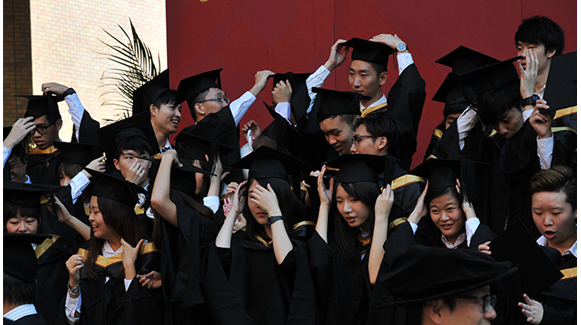
PhD and Post Doctoral positions open
We are currently seeking PhD students, Postdocs who have a keen interest in the research fields of artificial intelligence, large language modeling, text mining and augmented/virtual reality for medicine and healthcare applications. More importantly, we are looking for individuals who aspire to become distinguished scholars in these areas. Join our team of experts and shape the future of healthcare technology.

Research Assistant positions open
We are seeking dedicated research assistants to support our ongoing projects. Be part of our innovative team and help us revolutionize healthcare through technology.

Research Apprenticeship
Gain hands-on experience in smart health research through our apprenticeship program. Learn from industry leaders and contribute to meaningful projects.

Volunteers
Join us as a volunteer and make a difference in the field of smart health. Your time and skills can help us advance our mission to improve healthcare through technology.
Potential Collaborations

Site Visit
Discover our state-of-the-art facilities and meet our dedicated team through a site visit. Make an appointment with us through email!

Research Collaborations
Join us in our mission to transform healthcare. We welcome collaborations with researchers and institutions to drive innovation in smart health.

Data Sharing
We believe in the power of shared knowledge. Explore our data sharing initiatives and contribute to the collective advancement of smart health technology.
Photo Gallery
Contact Us
Centre for Smart Health
School of Nursing
The Hong Kong Polytechnic University
Hunghom, Kowloon
Hong Kong, SAR
- 2766 4551
- smart.health@polyu.edu.hk






